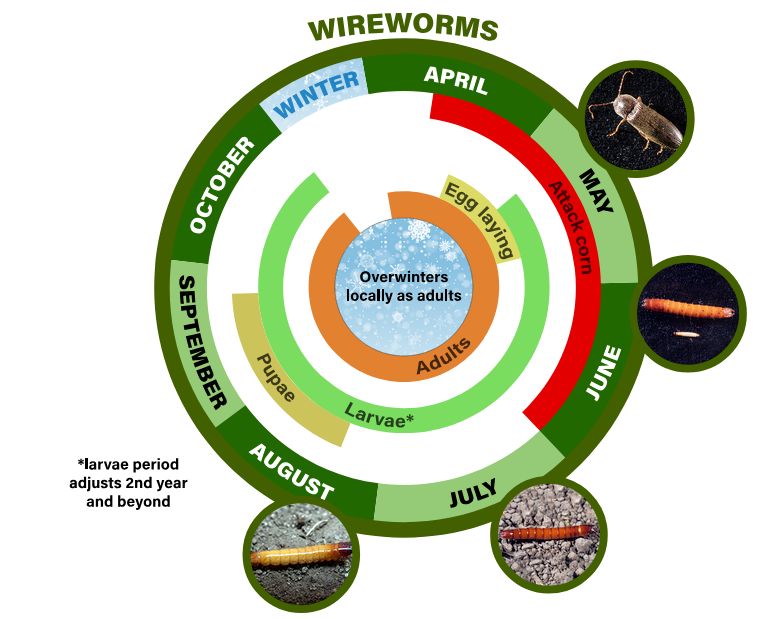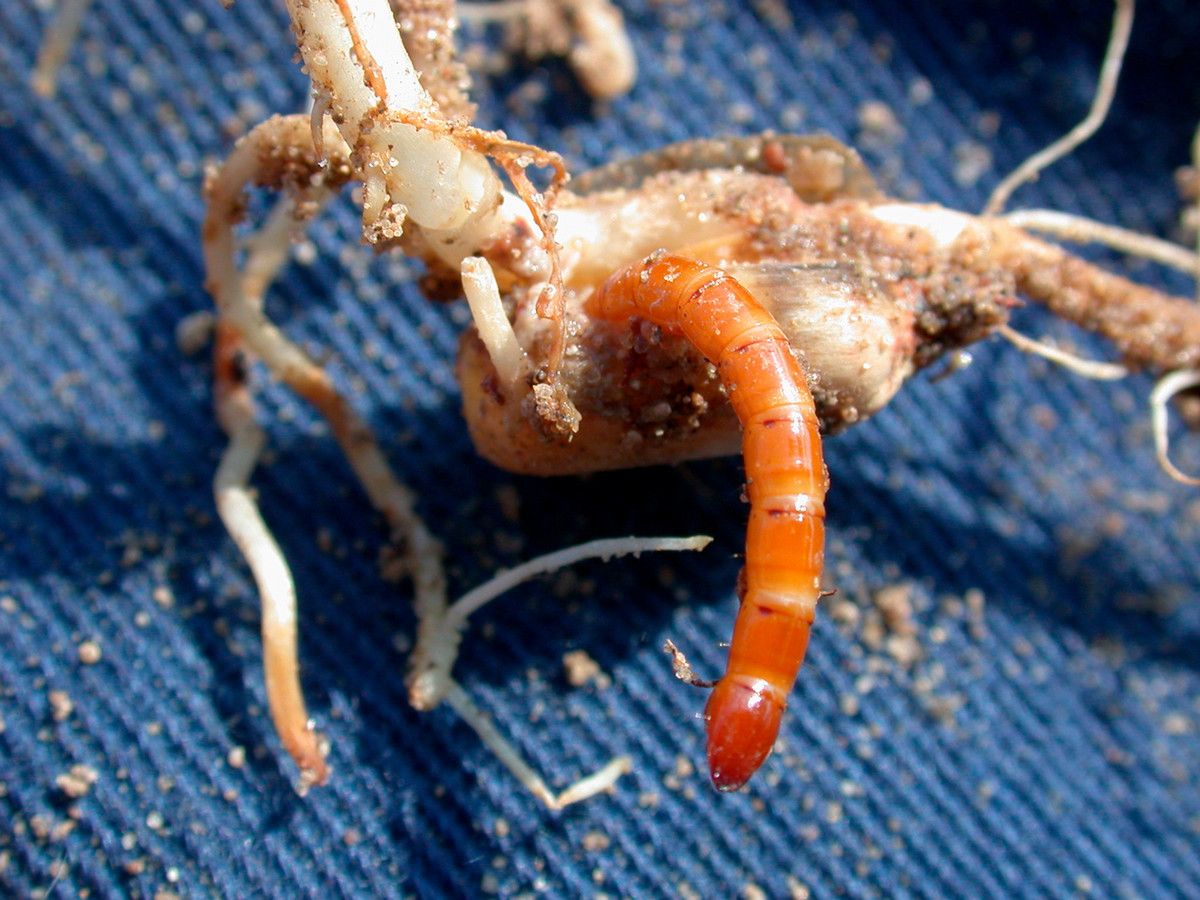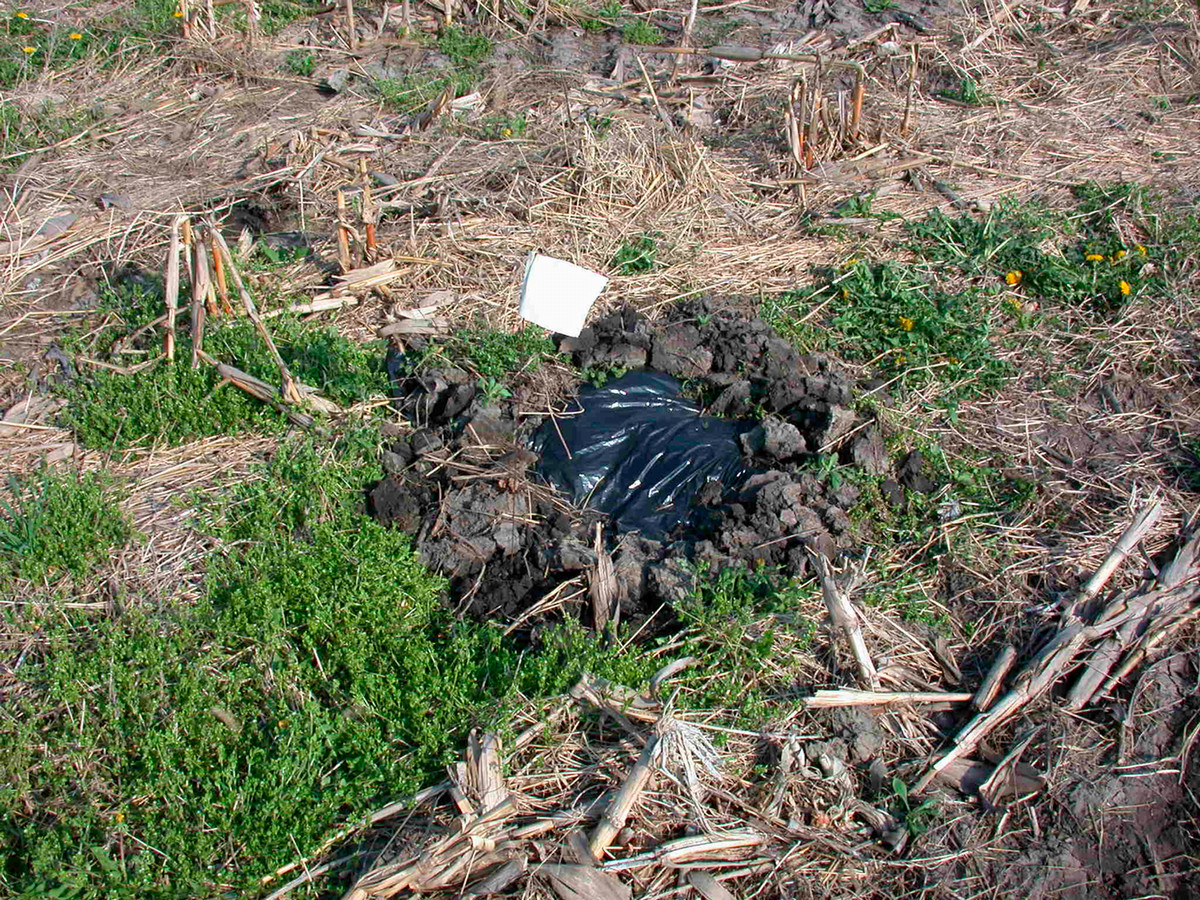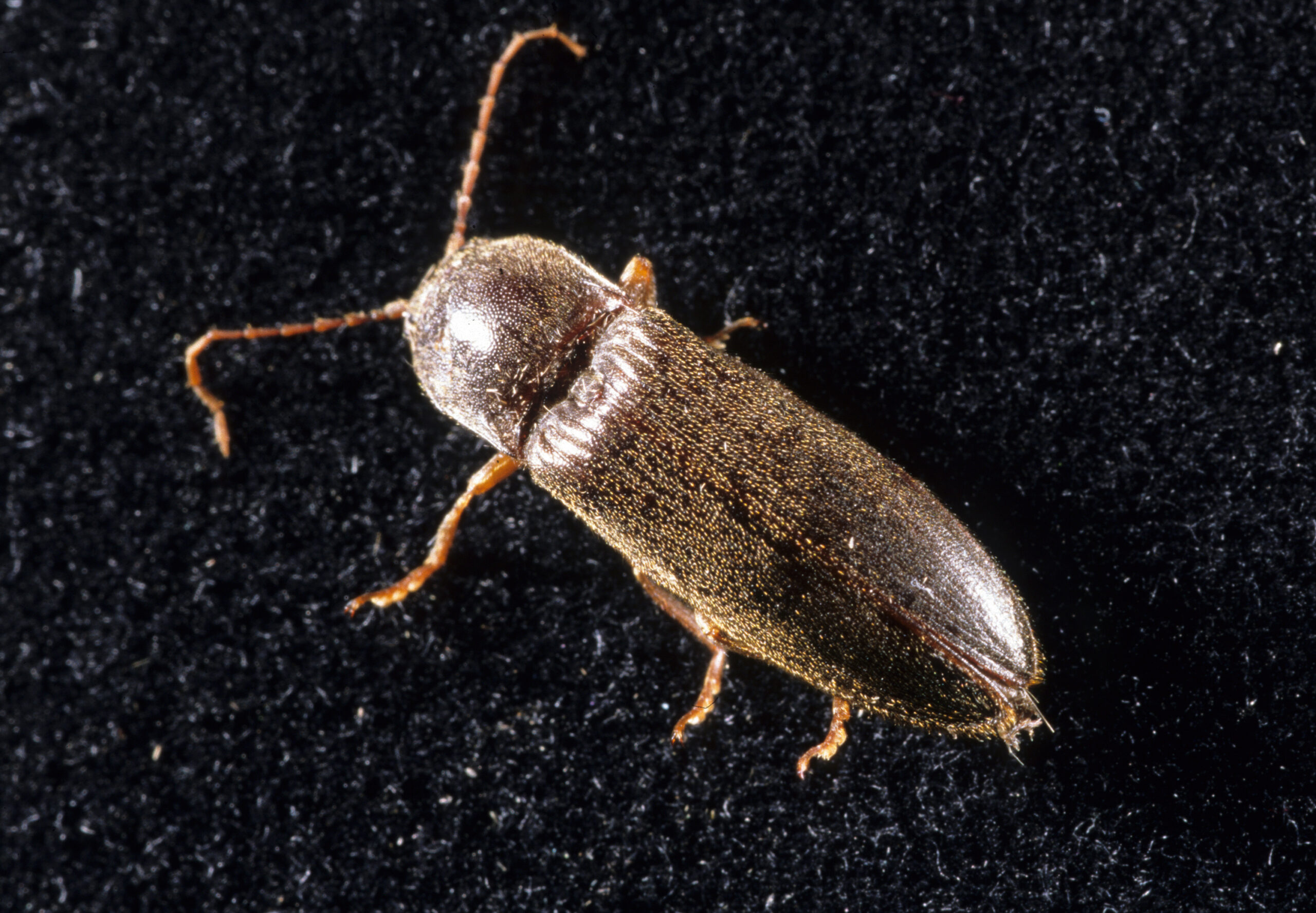Wireworms (Corn)
Melanotus spp., Agriotes mancus Say, and Limonius dubitans LeConte
Search the Pest & Crop Newsletter

The ability to see these full-sized life-cycle images is currently disabled to resolve an issue.
Related Video Resources:
Appearance and Life History
Wireworms are the larvae of click beetles, so named because of the clicking sound they make while attempting to right themselves after being placed on their backs. Several species of wireworm larvae damage cereal and forage crops while feeding on underground portions of plants, usually in the early stages of plant growth.
Wireworms are slender, hard-bodied, wire-like larvae that can damage young corn plants. They are typically shiny yellow to brown in color and range in size from 1/2 to 1-1/2 inches (13 to 38 mm) long. Since the life cycle of certain wireworm species may last from 4 to 7 years, larvae may damage several successive crops.
Click beetles lay tiny, white, round eggs in the soil, usually near the roots of grasses or grass-like crops in the spring. Damage by first-year wireworms is minor; feeding by the larger larvae in subsequent years is normally when economic damage occurs.
Damage

Photo by J. Obermeyer
Wireworm larvae may feed on the germ of corn kernels or completely hollow out the seeds, resulting in gaps in the rows. They may also cut off small roots or tunnel into the underground portions of the root or stem of young corn plants. These plants will appear stunted or wilted with the whorl leaves wilting first.
Wireworm damage occurs mainly during the early stages of plant growth and is more common when corn is planted early and the weather turns cold, slowing seed germination. Wireworm infestations are usually noted in areas of a field that stay moist for long periods of time.
Sampling Method
- Corn fields likely to be attacked by wireworms are those in which sod or small grains were grown the previous year(s), were in set-aside, or which have a history of such damage.
- Method 1:
- Establish bait stations in suspected wireworm fields two to three weeks before planting.
- In 5 randomly selected areas of a field, bury a mixture of untreated corn and wheat seed (a handful of each) 6 inches (15 cm) deep in the soil.
- Cover the site with a piece of black plastic to help heat up the soil and mark each site with a flag so that the bait stations can be easily found at a later date.
- After 2 to 3 weeks, or just before planting, dig up the bait and check for the presence and/or damage of wireworms.
- Method 2:
- 5 areas in a field, approximately 10 days before planting
- Dig up a 2 feet long by 1 foot wide by 6 inches deep (60 x 30 x 15 cm), 1 cubic foot, section of soil.
- Place the soil on a piece of black plastic or cloth and counting the number of live wireworms found.
- If suspected wireworm damage (i.e., wilted plants or gaps in the rows) is found during an early season field visit, sample the field immediately. In the area(s) where such damage is found, and in 5 randomly selected areas of the field, follow the steps described above in Method 2. Examine the plants for wireworm feeding damage, most notably small, cleanly bored holes at the base of the plants.
Management Guidelines

Photo by J. Obermeyer
Corn Insect Control Recommendations: E-series 219-W (PDF)
- Control may be necessary at planting if:
- Using a bait station sampling method – an average of one live wireworm per bait station is found or
- Using the soil screening sampling method – an average of one live wireworm per cubic foot is found.
- Several insecticides are labeled for wireworm control and can be used as pre-plant or planting-time applications. Insecticidal seed treatments are also labeled for control. In all cases, control is typically highly variable. No insecticides are available to be applied as rescue treatments. If a field is replanted due to wireworms and the wireworms are still present and actively feeding, use a soil insecticide and/or a seed treatment depending on the wireworm population.



